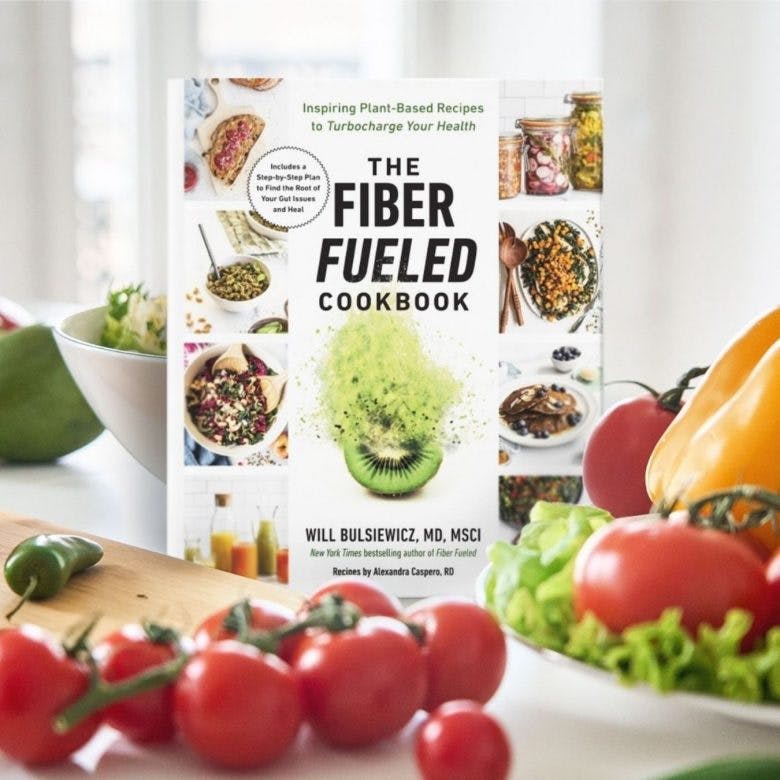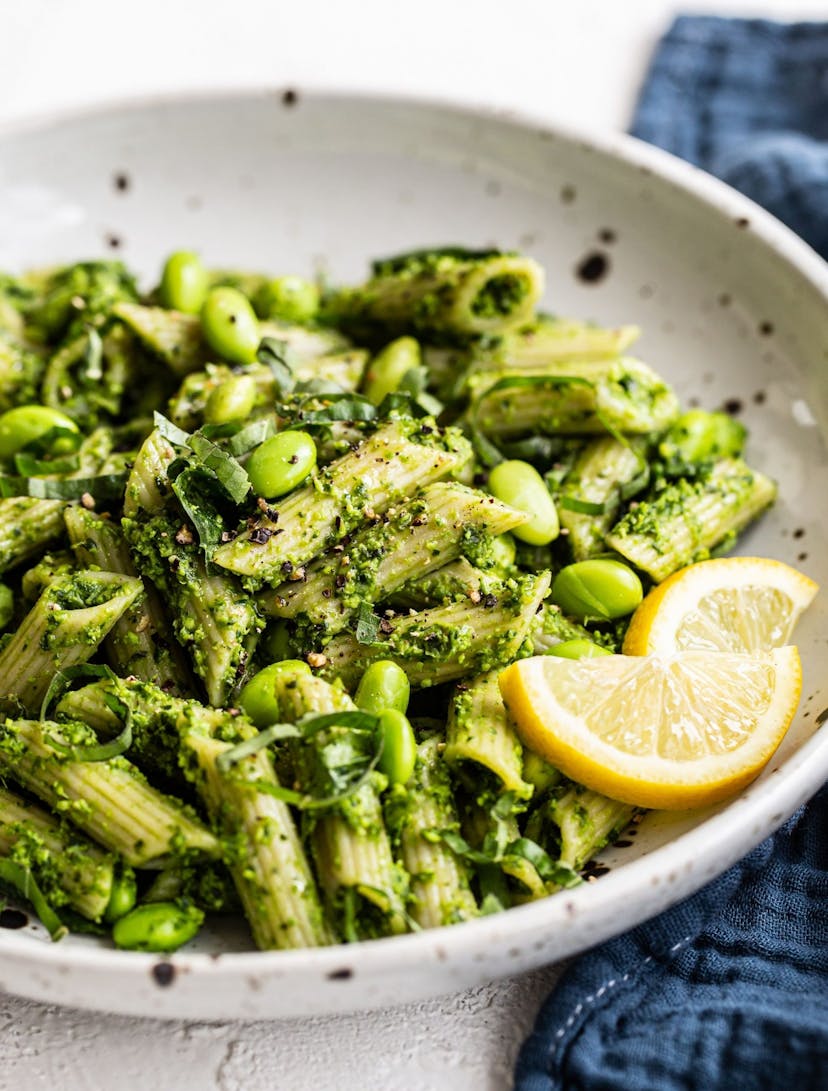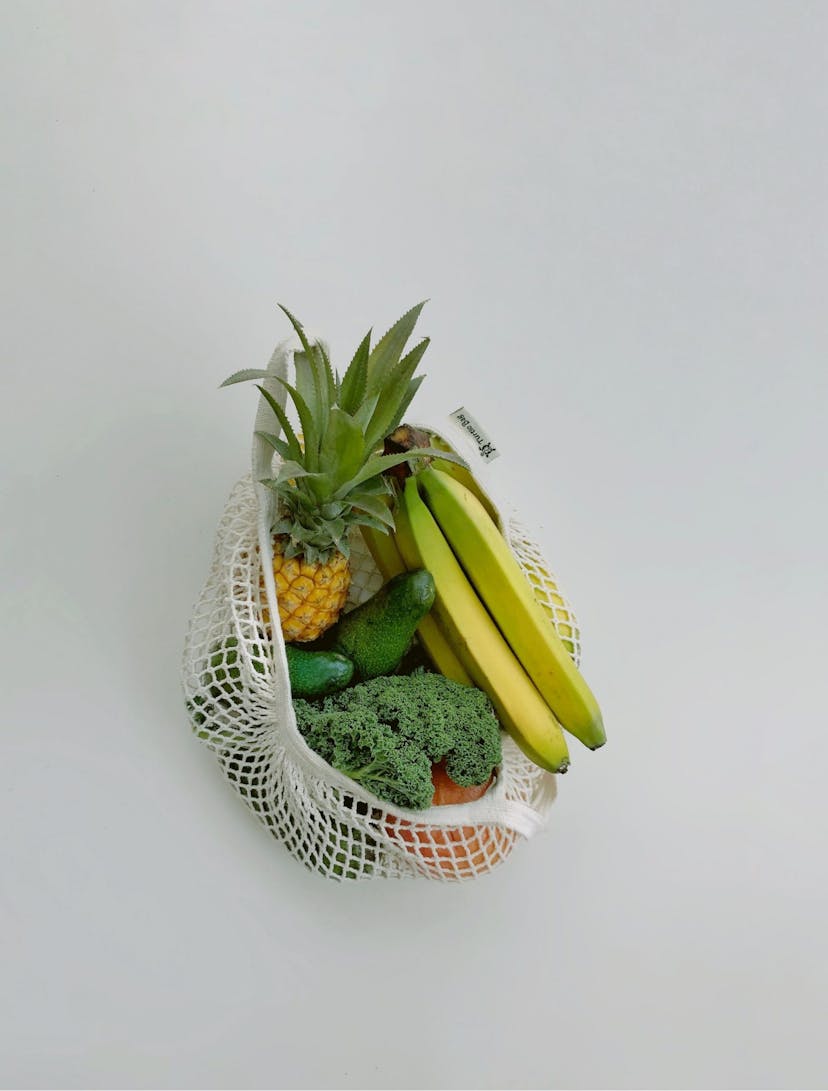Why You Need To Eat More Fibre: Simple Hacks To Up Your Intake At Home By A Doctor
10 minutes read
If you want to live longer, eat fibre. It’s no secret that a healthy diet is linked to longevity. But as the adage goes, it’s easier said than done.
Most people worldwide eat less than 20g of fibre a day. The British Nutrition Foundation reports that most people still don’t fall within the government guidelines in the UK. Only one in 10 adults consume the recommended 30g of fibre daily.
Beauty Daily talks with Dr Will Bulsiewicz, New York Times Bestselling Author and US Medical Director of ZOE International, on simple hacks to up your intake of fibre-rich foods. Plus, there’s a sneak peek of recipes from his new book: The Fiber Fueled Cookbook. Keep scrolling!

Firstly, what is fibre?
Fibre is an indigestible carbohydrate typically found in foods such as whole grains, beans, and legumes. All fruits and vegetables have fibre, but are concentrated in the skin, seeds, and membranes. So next time, don’t peel your potatoes or apples; the skin has loads of fibre! The bin won’t gain; your gut (and skin) will!
What does fibre do for your body?
The key role of fibre is keeping your digestive system up and running, while keeping gut health in tip-top condition. So yes, fibre makes you poop. It also reduces cholesterol, promotes blood sugar control, and keeps gut bacteria fed, which results in less inflammation and healthy, glowy, lit-from-within skin.
For those asking “What does fibre do for poop?,” it increases the weight and size of your stool and softens it. So fibre is great for maintaining bowel movements.
Read next: Adopt A Holistic Approach If You Want Healthier Skin In 2022
Is fibre good for weight loss?
A bonus is that it aids weight loss as fibre-rich foods make you feel fuller without adding extra calories to your diet and boost the metabolism.
Experts say fibre-rich whole foods that require chewing and retain much of their structure in the gut increase satiety and help weight control. So, load up on high-fibre foods to get healthy and shed an extra kg or two simultaneously.
Read next: 7 Expert-Backed Ways to Boost Your Metabolism
Why do we need more fibre in our diet?
What happens if you don’t get enough fibre? One who is not fond of fibre might not live for long, experts warn. The Lancet study found that people who routinely eat lots of fibre have significantly lower rates of fatal diseases compared with those who consume much lower amounts.
“In the largest fibre study to date, they found that increased consumption of dietary fibre ,by simply eating more plants, reduced a person’s likelihood of having a heart attack, dying of heart disease, being diagnosed with multiple types of cancer, dying from cancer, having a stroke, or being diagnosed with diabetes. There’s also evidence that it lowers our risk of Alzheimer’s and chronic kidney disease. So, in short, simply consuming more plants in your diet can reduce your exposure to six of the top 10 causes of death in the Western world,” Dr Bulsiewicz says.
Is there such a thing as too much fibre?
Don’t get too excited because excess of everything is bad. “There is such a thing as too much fibre. But, you can also have too much oxygen and water, even though we need those things to sustain life,” warns Dr Bulsiewicz.
Too much fibre in the diet can cause bloating, gas, digestive stress, and constipation.
These uncomfortable side effects can occur when you consume more than 70g of fibre a day. So, stick to 30g ladies and gents.
Dr Bulsiewicz advises treating fibre very much like exercise.
“It’s something massively beneficial to your body and should be a focus for better health, but you would never wake up one day and run a marathon without training first. The same goes for fibre.
Our gut can digest a certain amount of fibre, but if we train our gut, then, much like a muscle, it will grow stronger and become more facile at processing and digesting fibre for us, which allows us to consume more and get even more benefits,” he adds.

Doctor-Approved Hacks To Up Your Fibre-Rich Foods Intake At Home
One might picture a fibre-rich dish as too green, too bland, or just overly too healthy for one’s taste.
Let’s be honest – the word fibre doesn’t sound appealing, But don’t worry, you are not required to make compromises to increase your fibre intake; a simple hack is to recreate your favourite food to their best, healthier versions.

“I fully expect you to eat delicious food that makes you drool and brings you great joy. I just want that to also be food that fulfils your bodily needs and brings you great health for many years to come. So when we boost our fibre intake, it’s important to start with food that you already love,” says Dr Bulsiewicz.
Start by looking for a plant-based version of one of your favourite dishes.
“Love a good BLT [classic American sandwich with bacon, lettuce, and tomato]? Cool, you should try my BLT with avocado on sourdough with super simple and shockingly delicious tempeh bacon.
Ethnic food can be a great starting point since most ethnic foods have plant-based origins. So would you like a burrito bowl, curry, paella, or maybe some sweet and spicy lettuce wraps? No matter what you choose, my recommendation is to start with one meal and then go from there by setting simple and sustainable goals that you know you can meet,” recommends Dr Bulsiewicz.
What if I have a food intolerance?
Leading a fibre fuelled diet is not as straightforward and easy for some due to intolerances. Some are intolerant or hypersensitive to certain foods, which Dr Bulsiewicz addresses in detail in his new cookbook.
“My first book, Fibre Fuelled, came out in 2020 and has sold more than 200,000 copies. I’ve received countless messages from readers, and many of them were motivated to be ‘fibre fuelled’ but were struggling with food intolerances.
I used my second book as an opportunity to create a path to healing for these people, and I made it a cookbook because to heal food intolerances, you need lots and lots of recipes,” says Dr Bulsiewicz
The 369-page Fiber Fueled Cookbook includes 11 chapters of gut-healing knowledge and guidance. All the recipes are strategically designed to foster better gut health. It includes recipes like Sourdough Cheese-its, Cheesy Broccoli and Potato Soup, Edamame Pesto Pasta, Mexican Hot Chocolate Brownies and more!
“So, for those who are healthy and don’t have any issues, this book intends to provide a better understanding of how the gut microbiome is connected to digestion, immunity, metabolism, hormones, mood, brain health and energy levels.
This book helps you fortify your gut by simply eating delicious meals. The point is this book has something for everyone because gut health is critically important to all of us, and this book is designed to take you there,” Dr Bulsiewicz concludes.

Order The Fiber Fueled Cookbook: Inspiring Plant-Based Recipes to Turbocharge Your Health
Edamame Pesto Pasta Recipe
To get your start with your Fibre Fueled Diet journey, Dr Bulsiewicz shares one of the many great recipes from his new cookbook, Edamame Pesto Pasta (with quinoa pasta/gluten-free pasta)

Ingredients:
12 ounces gluten-free pasta, rotini, or penne
1½ cups cooked edamame
2 cups packed fresh basil, plus ½ cup torn
basil for garnish
2 cups packed fresh spinach leaves
1 tablespoon nutritional yeast
1 to 2 tablespoons freshly squeezed
lemon juice
2 tablespoons garlic-infused olive oil
½ teaspoon salt
Optional toppings:
Halved cherry tomatoes
Pine nuts
Instructions:
- Bring a large pot of water to a boil. Add the pasta and cook until al dente according to package directions. Drain, reserving ½ cup of the pasta water. Set aside in a large bowl.
- Add ¾ cup of the edamame to the base of a food processor and pulse 10 to 15 times until roughly chopped. Add in the 2 cups basil, the spinach leaves, and nutritional yeast and pulse another 10 times, until well combined.
- With the motor running, add in the lemon juice and olive oil or broth until well combined. Add in the salt and season to taste. With the motor running, slowly add in the pasta water, 1 tablespoon at a time, until the desired consistency is reached I usually end ⅓ cup)
- Toss the edamame pesto and remaining edamame with the cooked pasta, adding in 1 tablespoon or so of reserved pasta water as needed to thin. Add the torn basil leaves and toss with the pasta. Stir in the additional supercharged toppings of choice.
Dr Bulsiewicz Pro Tip:
If you buy a hydroponic basil plant, store it on the counter in a vase of water and change the water once a day. Similarly, you can store cut basil in the same way. Basil is a warm-weather herb, so the refrigerator is a bit too cold for it.
Fibre-rich foods grocery list
This life-saving food is plentiful in the market but often neglected because of all the temptations around. Skip the junk food aisle and head straight to the fresh produce.
Go ahead and bookmark this page for reference whenever you go grocery shopping. For you to monitor or count your recommended 30g fibre intake, we recommend buying a Digital Kitchen Scale.
Spread out your fibre from breakfast, lunch, snack, and dinner via a varied rainbow diet.
Here we listed the top high fibre foods as listed by the experts. All values are for a 100-gram portion and one cup (250g).

High Fibre Fruits
- Pears (5.5 g in a medium-sized, raw pear, or 3.1 g per 100 g)
- Strawberries (3 g in 1 cup of fresh strawberries (8 large strawberries) or 2g per 100 g)
- Avocado (10 g in 1 cup of raw avocado, or 6.7g per 100 g)
- Apples (4.4 g in a medium-sized, raw apple, or 2.4 g per 100 g)
- Raspberries (One cup of raw raspberries (8 medium-size berries) contains 8 g of fibre or 6.5 grams per 100 g)
- Prunes (7.1 g per 100 g)
High Fibre Pulses
- Lentils (13.1 g per cup of cooked lentils, or 7.3 g per 100 g)
- Kidney beans (12.2 g per cup of cooked beans, or 6.8 per 100 g)
- Split peas (16.3 g per cup of cooked split peas, or 8.3 per 100 g)
- Chickpeas (12.5 g per cup of cooked chickpeas, or 7.6 per 100 g)
High Fibre Vegetables
- Beets (3.8 g per cup of raw beets, or 2.8 g per 100 g)
- Broccoli (2.4 g per cup, or 2.6 grams per 100 g)
- Artichoke (6.9 g in 1 raw globe artichoke, or 5.4 grams per 100 g)
- Spinach (2.2 g per 100g)
- Sweet potatoes (2.5 g per 100g)
Pro Tip: Substitute beans or legumes for meat twice a week in soups.
High Fibre Cereals
Start your day with high-fibre cereals. Opt for ones that have whole grain as their first ingredient. Another tip is to look at the Nutrition Facts label and choose cereals with 20% or higher of the Daily Value (DV) for fibre.
- Oats (16.5 g per cup of raw oats, One cup of cooked oatmeal is 4 g)
- Wheat Bran (13 g per 100 g)
High Fibre Snacks
Have nuts, fresh fruit or crunchy vegetables for snacks or dessert instead of chips and crackers. Here are some you can munch on.
- Dark chocolate (3.1 g in a 1-ounce piece of 70–85% cacao, or 10.9 g per 100 g)
- Air-popped popcorn (1.15. g per cup of air-popped popcorn, or 14.4 g per 100 g)
- Almonds (4 g per 3 tablespoons, or 13.3 g per 100 g)
- Carrots (3.6 g in 1 cup of raw carrots, or 2.8 g per 100 g)
- Cucumber (2 g per 100 g)
Pro Tip: Add high-fibre foods and spruce up your dishes: 1-2 tablespoons of almonds, ground flaxseeds, or chia seeds to cereals is a great hack! Or cook potatoes with the skin on and swap white bread, pasta, and rice for wholemeal versions.
“Over time, you will find your taste buds come along for the ride and evolve, and you will absolutely love the food you are eating but you will also be empowered to better health by eating this way,” says Dr Bulsiewicz.
Read next: Nutritionist-Approved Guide To Clean Eating
Sign up for our newsletter
We will keep you in the loop for special offers, exclusive gifts and product news.

